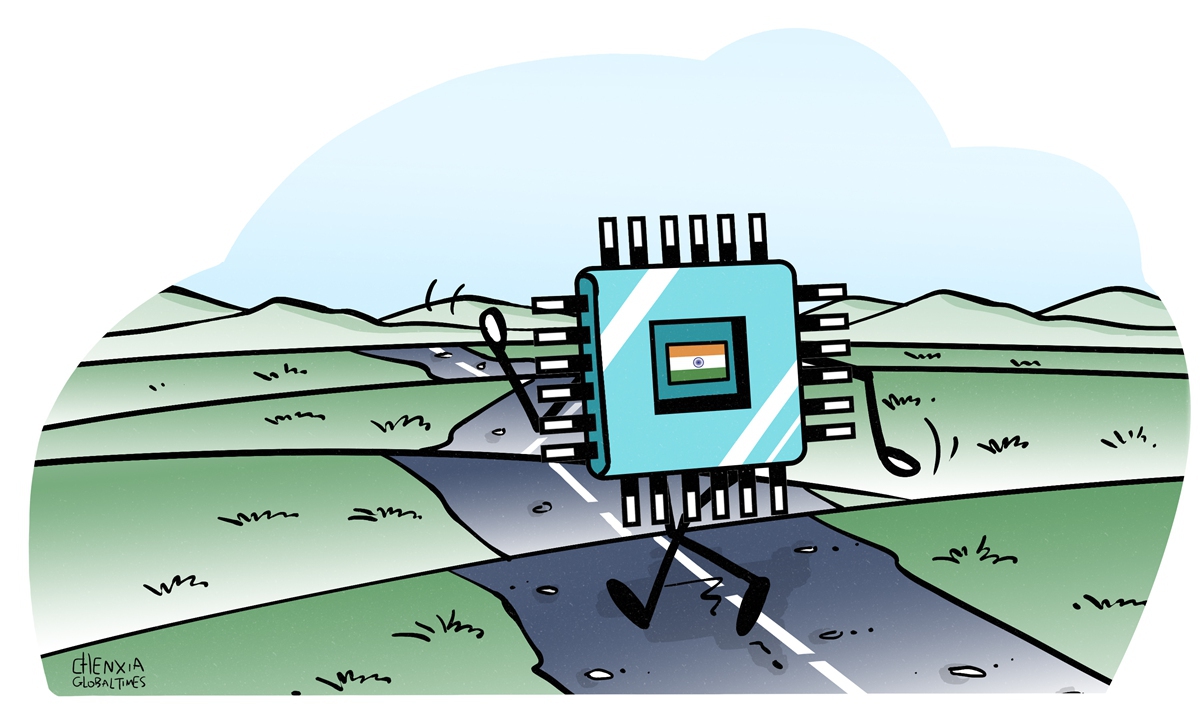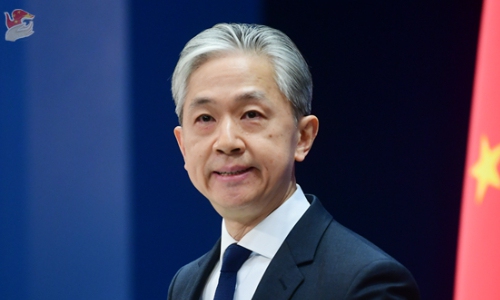Complementarity outweighs competition in strengthening Chinese, Indian semiconductor industries

Illustration: Chen Xia/Global Times
While India's semiconductor sector is on an upward trajectory, bolstered by preferential government policies and efforts to boost investment, some Western media outlets have once again hyped up the issue of China-India "competition."The Wall Street Journal (WSJ) published an article on Saturday under a headline: "How China Could Swamp India's Chip Ambitions." Its narrative is largely biased against China. But ideological prejudice and a zero-sum mentality won't help India's semiconductor manufacturing sector.
The WSJ's report came at a sensitive time. India's Economic Times reported on Thursday that India's semiconductor ambitions have taken a significant leap with Indian Prime Minister Narendra Modi inaugurating three new manufacturing and assembly facilities in Gujarat and Assam.
Amid the US' ill-intentioned chip war against China, Washington may try to drive a wedge to disrupt economic cooperation between China and India. Also, the US elites are trying to persuade India to buy into the idea that China is an "adversary" of India, while persuading New Delhi to be the vanguard of the US' chip war against China.
However, India's semiconductor manufacturing sector is still in its infancy. What is needed today is cooperation, rather than confrontation.
It's hard for India to replace China in the global semiconductor industrial and supply chain because of China's resilience on the back of massive domestic market demand, sufficient capital, and rich talent supply. If India wants to boost its chip industry, it should strengthen cooperation with all the countries in the supply chains, including China's role as one of the world's major manufacturing hubs.
The semiconductor value chain is a complex web of manufacturers, designers, and service providers. This complicated supply chain cannot be built overnight.
India has some key advantages for manufacturing, such as a demographic dividend, but at the same time, the country faces challenges such as weak industrial infrastructure and a high illiteracy rate that hinder development of its high-tech manufacturing.
China and India share large potential for cooperation, in which China's possession of cutting-edge technologies and its exports of machinery equipment, intermediate products and core components can be instrumental for India's semiconductor industrial development.
India's semiconductor edge lies in its own home demand. The country's demand for semiconductors has significantly expanded in recent years. However, if India wants to make itself a regional semiconductor manufacturing hub, it cannot focus on its domestic market only. The country should turn itself into a net exporter of semiconductors. China is currently the world's top semiconductor consumer. The two sides share broad potential for cooperation in this field.
As for semiconductor manufacturing, complementarity between China and India is increasing.
If India can provide an open, fair, and non-discriminatory business environment for Chinese companies to invest and operate in the country, China-India economic and trade cooperation can reach a new height. In this process, India's semiconductor manufacturing sector will gain more impetus for development in the coming years.
The author is a reporter with the Global Times. bizopinion@globaltimes.com.cn



